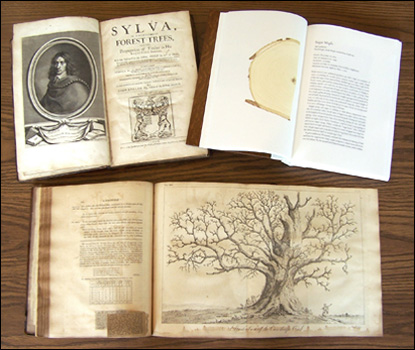Great Forests, Great Nations
In the early 19th century, Midwestern farmers loaded their crops on flatboats at the end of every summer and floated them down the Mississippi River to New Orleans. The timber that was used to make these boats came from places like Minnesota and Wisconsin, and yet because the river’s current was so strong, it was impossible to take the boats back upriver after they had been unloaded. Instead, they were sold for scrap in New Orleans and were subsequently used to build many of the city’s houses.
Although the flatboat trade ended with the coming of the railroad, another product of the Wisconsin woods recently found its way to Louisiana. Between 1996 and 2006, Gaylord Schanilec and Ben Verhoeven (both of Midnight Paper Sales) collected 24 species of wood near Schanilec’s home fifty miles southwest of Eau Claire—ranging from maple and birch to ironwood and black walnut—and wrote a "biography of a forest." But it’s not just a catalog of dry, scientific facts. "Gaylord and I have found that trees are fitting vehicles for human history," Ben writes. "They have been not only witnesses, but also players in many pivotal events, both nationally and locally." Bound in beautiful wooden boards and featuring, in the text, cross-sections or “portraits” of each of the 24 trees, the book is entitled Sylvae (from the Latin word for "forest"). LSU Special Collections recently purchased a copy of it for the E.A. McIlhenny Natural History Collection.
Almost 350 years ago, the English writer and horticulturalist John Evelyn wrote a similar book, Sylva, or A Discourse on Forest Trees (1664). The English may not have used flatboats to get their crops to market, but they did need trees for something else that was just as important—their navy. England's famous "wooden walls" protected it from being overrun by foreign armies, and yet, as Evelyn complained, landowners "oftener find wayes to Fell down, and Destroy their Trees and Plantations, than either to repair or improve them." A great nation, he pointed out, needed great forests. Although England ended up getting most of its timber from North America and Russia in the 18th and 19th centuries, Evelyn’s work was very popular and went through many editions. LSU now owns two copies—the second edition of 1670 and a later, annotated edition dated 1801.
-- Michael Taylor, Assistant Curator of Books

